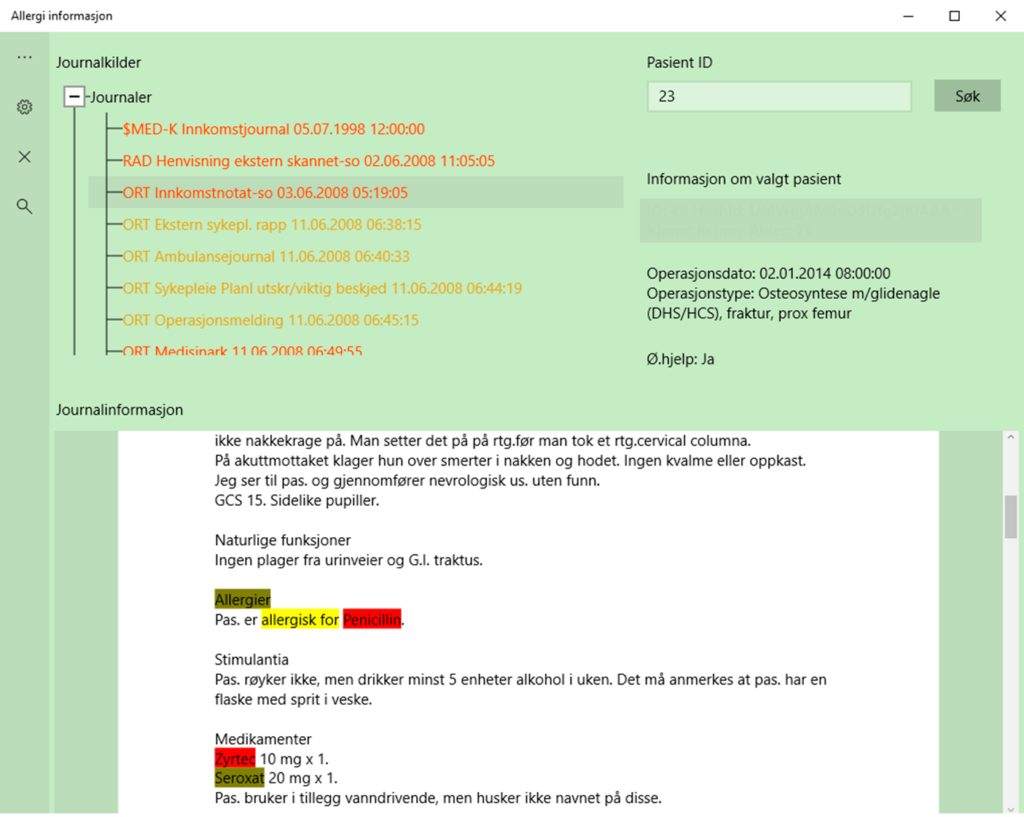
BACKGROUND
Undisclosed allergic patient reactions are a major risk when undertaking surgeries in hospitals. Critical information about patient allergies (e.g., anesthetics, drugs, contrast media, food, and environmental) in the Electronic Health Record (EHR) may not be updated or complete, and may also be prone to inaccuracies, increasing clinical risk. Furthermore, todays’ EHR systems are not robust enough to capture nuances and variations in the patient “narrative” to allow an accurate search for and identification of clinical data, at the same time performing manual search in the patient narrative is infeasible as it contains voluminous, unstructured, and complex data.


A FIELD TRIAL IN A NORWEGIAN HOSPITAL
Anzyz participated in a field trial of an NLP-driven Clinical Decision Support System (CDSS) developed and implemented in a Norwegian Hospital. Utilizing Anzyz’ proprietary AI-algorithm CCLTM, the solution incorporated unsupervised and supervised machine learning combined with rule-based algorithms for clinical concept-based search to identify and classify allergies of concern for anesthesia and intensive care. Concept-based search systems differ from keyword search systems in that they try to determine what a user means. The AI-system also implemented a semi-supervised machine learning approach to automatically annotate medical concepts in the narrative.

APPROACH
The CDSS, incorporated a novel algorithm-based approach for text mining of the patient narrative for identifying and classifying patient allergies (to automatically flag/alarm when patient allergies are serious and requires further attention from physicians). The system was accessed by PC’s and tablets, on an interface developed with an emphasis on ease of use and simplicity. Patient documents containing patient allergy information were filtered and presented, and allergy concept-related words or phrases highlighted in the text.


IMPACT
The field trial demonstrated that the proposed CDSS increased detection of patient allergies, and that the system received high-level acceptance by the clinicians using it. Further, retrieving and analyzing a patient health record containing about 400 documents took about 10–15s. A doctor or a nurse manually reading and searching through the same number of documents for specific information would generally spend hours completing the task.
In a follow up study, 96.2% of the respondents reported that the system provided correct and meaningful information. 90.4% reported increased productivity by using the CDSS, by having to use less time on manually searching the patient narrative for allergies. More importantly was the system’s contribution to increased treatment quality and patient safety (reported by 98.1% of the users) caused by the increased number of patient allergies detected.

